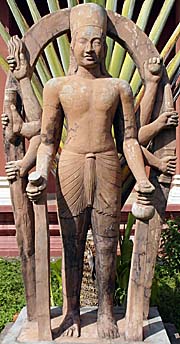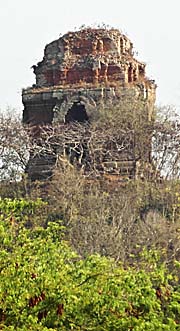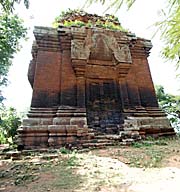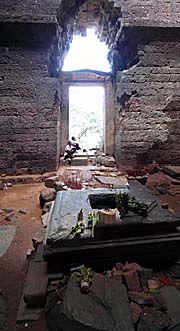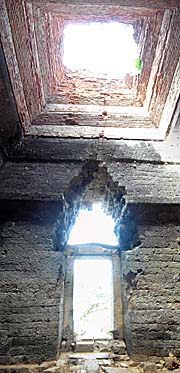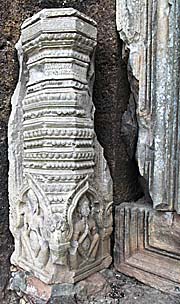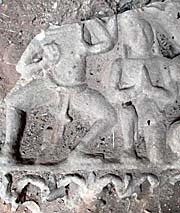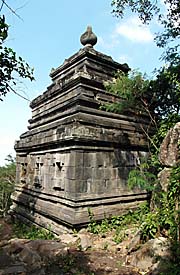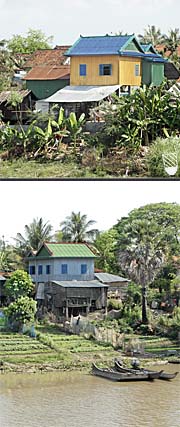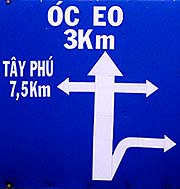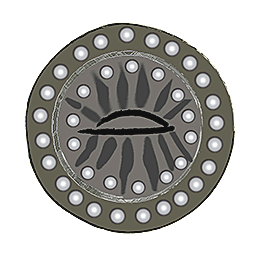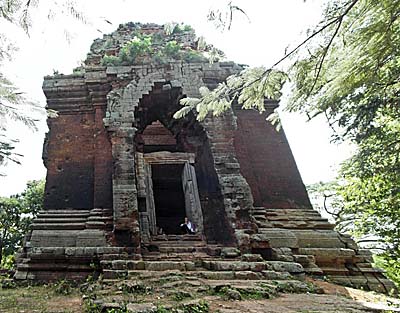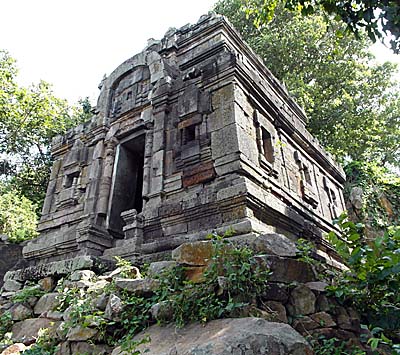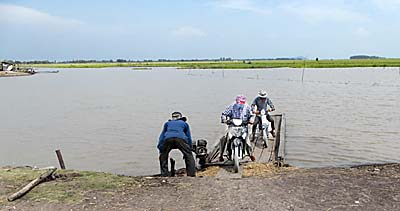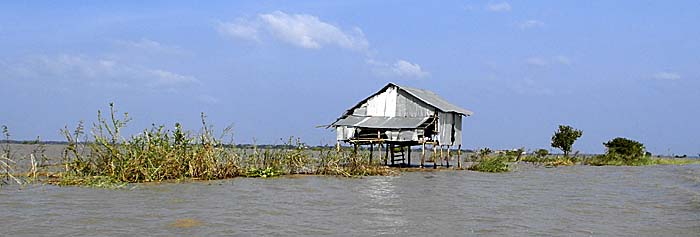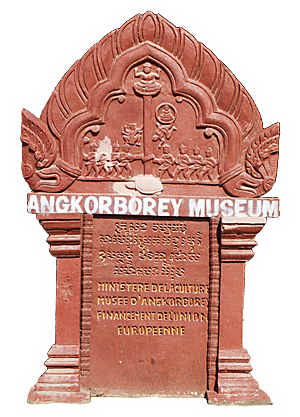Angkor Borei
Nowadays a meaningless village close to the Vietnamese border, Angkor Borei was once among the first urban centers of Southeast Asia. If you come to Angkor Borei without knowing that it was maybe the first settlement in the whole world region, you wouldn't guess it. The contemporary little town is build mostly on the same ground as the ancient place was. About 6,000 people are living there today. It looks not any different here than in any other Khmer town.
Angkor Borei Museum
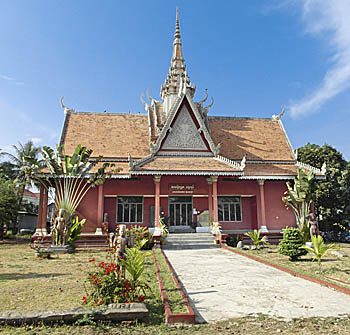
The small museum in Angkor Borei. A number of old artefacts are displayed here. According to the inscription in the pillar down left it's EU financed. Image by Asienreisender, 4/2014
Situated in the Mekong River delta, some archaeologists suppose that Angkor Borei was the capital of Funan, Southeast Asia's oldest civilization. Many Khmer consider Angkor Borei as the cradle of Khmer civilization.
Other historians rather think that Funan's capital was situated at another ancient town, Vyadhapura, not far away down in the Mekong delta (of unknown exact location), but behind the closeby border to Vietnam. Another possible candidate for Funan's capital was Oc Eo, also closeby in Vietnam. Might be that the capital changed over the time; might also be there was no capital of this civilization. There are dozends of ancient settlements in the Mekong delta, most of them are in nowadays Vietnam. The discussion about the site of the capital has also a superficial ideological implication; if the ancient Khmer had their center or origin in nowadays Cambodia or in nowadays south Vietnam.
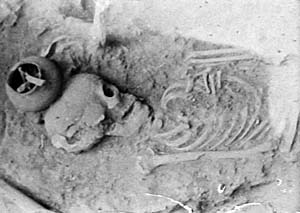
Angkor Borei was as a settlement inhabited since around 400 BCE. Other archeological traces date back to the neolithic. Some findings are displayed in the little frequented museum in Angkor Borei. Image by Asienreisender, 11/2013
However, historians still don't know what ethnic people the people of Funan were. It could have been early Khmer people already, but the Indian influence is dominant. The oldest dated artefact in Khmer script was found at Angkor Borei. It's from 611 CE.
The ancient town of Angkor Borei also played a role in Funan's successor, the empire of Chenla, from the 8th century on. Chenla was split into two parts. There was the so called 'water Chenla', which center was around here in the Mekong Delta, and there was a land based Chenla with it's geographical center further northwest in the inland.
The old Angkor Borei was surrounded by a six kilometer long city wall. That gave the place a cosiderable size. Remains of the wall are partially still there, partially they fell victim to modern construction activity in recent years.
The City Wall
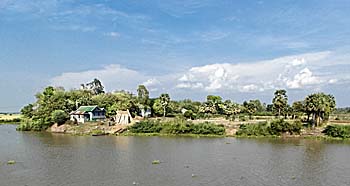
The rampart below the trees on the other side of the canal was part of the ancient city wall of Angkor Borei. Image by Asienreisender, 2014
More than twelve ancient brick buildings could be identified. Presumably they served religious purposes, as it was exclusively so for stone buildings in the pre-Angkorian civilizations and in Angkor itself. There was also a number of artefacts found in and around Angkor Borei. It's ceramics, sculptures, graves, stone inscriptions, coins and more. They are either in the little museum of Angkor Borei, in the National Museum in Phnom Penh or in Paris. Many of these artefacts were found in an ancient cemetery, which was situated in the middle of the walled settlement. The corpses were not cremated and there were burial goods found.
The archaeological research in Cambodia is mostly focused on the wider Siem Reap region with the classical Angkorian temples. Research in the Mekong Delta is neglected in Cambodia, although research in Vietnam is on a much higher level. That has to do also with the fact that very few Cambodian archaeologist survived the Khmer Rouge terror regime: it's said only four.
The Canal of Angkor Borei
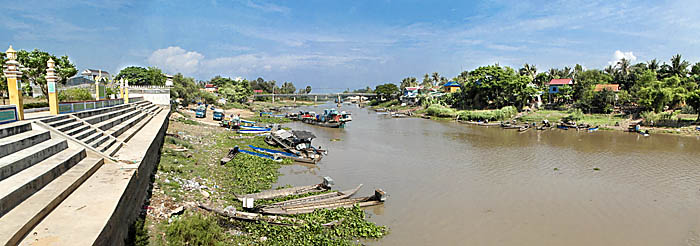
Angkor Borei at the banks of an old canal. Freighters unload goods near the bridge. Angkor Borei was connected by the canal to Oc Eo, another Funanese town of the time in nowadays Vietnam, some 80km southeast. The bridge leads to nearby Phnom Da. Image by Asienreisender, 4/2014


